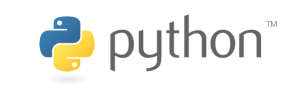Python online tutorial
Part 1: Introduction

Python is an easy-to-use programming language created in 1991 by Guido van Rossum. It is currently available for all major operating systems and consistently ranks among the top ten most popular programming languages in the world. Its uses include such diverse subjects as web application scripts, language processing or scientific computation.
It is:
- a high-level language, as it allows people to write the same functionality in less lines of code than, say, Java or C would.
- a general-purpose language, as it’s powerful and very flexible, making it ideal for all kinds of applications.
- an interpreted language, as programs written in Python directly execute when run instead of going through a compiler.
- a dynamic language, as it performs a lot of operations for us at runtime which we would have to explicitly perform otherwise, such as type conversion.
This tutorial is intended for people with very little or no prior programming experience, though more advanced users may still find it useful.

